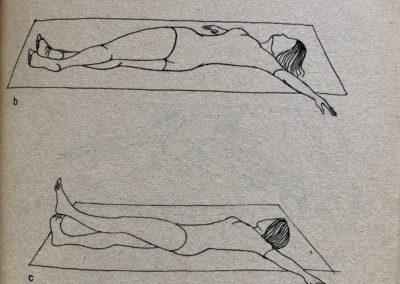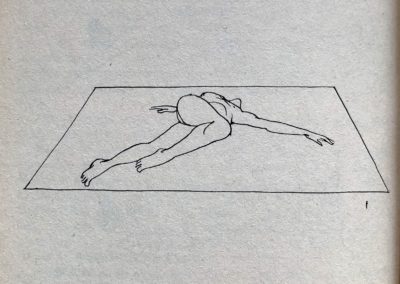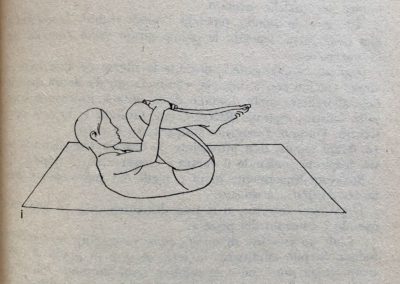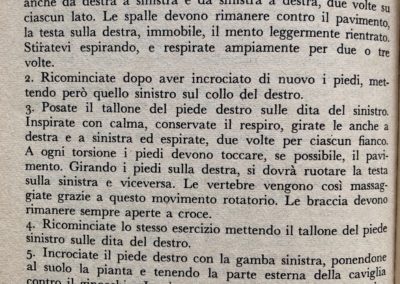Kriya PULLEY
Among the practices that usually offer in the spring there is that (worshiped!) dei Makara kriyā, a series of repeated twists performed ground.
It is a practice that the Master often suggested before the Sun Greetings, as a sort of preparation, yoga Vyayama, or as real Yoga Sadhana, with numerous variations and repetitions.
We like to practice it and offer it both ways, and we believe it is one of the best "gifts" received from Samiji because simple, safety, suitable for all levels and that requires a good presence but induces the same type of calm that brings the repetition of a mantra.
Here we propose some variant, found on the book "Yoga for Everybody" by Philippe de Meric* that chapter 23 It proposes it as "A 'flash' series for tired people".
“[…] we will propose a series quieter and much less known, which also deserves to be better known for several reasons.
These exercises, which cause a sort of friction of the spine, activate the general blood circulation, gently massaging the vertebrae and promote digestion. Apparently there is no contraindication against them, because they do not require painful efforts it special athletic qualities.
Their name is derived from the mimicry, which roughly reproduces the "movements of the crocodile emerging from the mud after his meal '. Although there are doubts about this analogy, this does not detract from the interest for the year. "
Their peculiarity is to be carried out by lying (usually back on the ground but also on their stomachs ...) maintaining the column in elongation and open arms cross or a little lower, keeping your shoulders as a fixed point: It will dock, In fact, the fulcrum of rotation, rotation that intesificherà more engaging shoulders, Hand hand that variants shorten the lever of the legs (from the legs stretched out to the legs flexed, for example,).
The head can rotate, if free, or stay fixed with his eyes to the ceiling trying to keep the neck stretched and relaxed even when their backs were stiff and stressed by the rotation of the pelvis: in that case it must be the right availability and fluidity to let them rise up, it serves, continuing dynamically rotations and only after many repetitions try to remain in the static, with the help of the hand to the ground (the side of the rotation) for "invite" the opposite shoulder to seek the soil; in case of stiffness of the back and the consequent "great lifting" of the opposite shoulder, with the risk of "push" the hand-forearm to the ground with the consequent risk of staking so the shoulder upwards (the opposite of the working direction), It might be useful to try to reduce the lever arm, bending at the elbow with the hand towards the head or with any other variant that does not stiffen, but let to stay in comfort and breathe.
Recommended many repetitions for dynamic variation, you can perform a deep breath: inspiro – I hold – It rotates on one side- return to center – espiro, and repeat on the other side and continuous.
After that you feel you have "sold out" the search for that variant, moves to the next. Depending on the time and needs you can select the most useful variants.
Earnings may start with some lateral extension "download" from the ground, such as those de Meric proposes closing, and start with a few variations legs stretched out before moving on to other more "short" to engage more shoulders but allow to remain in the static.
At the end you can re-run isometric stretches and stay some time savasana or go to the ground belly variants makarāsana
"This set of exercises is often considered by master yogis as a preparation for a session of complete positions.
For us it is a starter, chosen from among numerous other, which it has the merit of being available to everyone as it requires very little time.
Guests can exercise in the morning or in the evening before going to bed, to prepare you for sleep, unless you want to perform these exercises between two of the series that you will find in this book. "
For us it is the typical practice “for all seasons” and who also want to practice at home, being guided by the innate knowledge of the body, our great Master.
____________________
*Philippe Meric, Yoga for all, Garzanti Publisher, 1971, pp. 235-241





